10th April 2020 Current Affairs in Tamil & English

10th April 2020 Current Affairs in Tamil & English – Today Current affairs PDF link available below.
Dear Aspirants, we (Vetripadi.com team) have come with Daily Current affairs analysis. It is prepared to crack the various competitive exams. We are here to make sure your preparation easy. We will update the current affairs every day. It will help for both preliminary and mains (facts oriented with background information) for your preparation. We need you support.
VETRIPADI Daily Newsletter
வெற்றிப்படி.காம் | வெற்றிக்கு நீ படி!!!
Daily Current affairs for Competitive
Exams (TNPSC, SSC)
10th APRIL 2020
Table Of Content
- No significant rate of increase in COVID19 positive cases: ICMR
- Odisha becomes first State to extend lockdown till April 30
- Kejriwal launches ‘Operation SHIELD’ against COVID19
- Government app will track quarantined individuals
- Kerala gets nod for trial of plasma therapy
- BEL, AIIMS develop remote monitor
- SC tells Centre to reply to plea for 4G in J&K
- World faces new ‘Great Depression’
- Gamosa’ evolves from memento to mask in Assam
No significant rate of increase in COVID19 positive cases: ICMR
Information in News:
The Indian Council of Medical Research notes that 1, 44,910 samples from 1, 30,792 individuals had been tested as on April 9.
The Indian Council of Medical Research (ICMR) on Thursday said the country has maintained a steady rate of COVID-19 positive cases — 3% to 5% over the past month and half — and has registered no significant increase in this trend so far.
The country currently has 5,865 confirmed cases and 169 deaths. This includes 591 new cases and 20 deaths in the last 24 hours, Joint Secretary in the Union Health Ministry Lav Agrawal said at the daily press briefing. He added that 473 people had recovered and been discharged so far.
Plasma therapy
Dr. Murhekar added that the Council was in the final stages of drawing up a protocol for trial on convalescent plasma therapy, for which approvals have to be taken.
“In this therapy, plasma from a COVID-19 recovered patient is transfused into an infected severely ill patient so that the specific antibodies in the blood of the recovered patient can help fight the infection. This is done for very ill patients on ventilators and has given good results in some studies abroad,”
The Health Ministry said,
- The two of its labs have started whole genome sequencing of the COVID-19 virus.
- Indian Railways has produced about six lakh reusable face masks and over 4,000 litres of hand sanitiser; it has also converted 3,250 coaches into COVID-19 isolation units with beds. Total 5,000 coaches are to be converted.
- No need to panic over the availability of COVID-19 personal protective equipment (PPE), but stressed these should be used rationally. “Twenty companies are manufacturing PPE in India and orders for 1.7 crore PPE have already been placed with them.

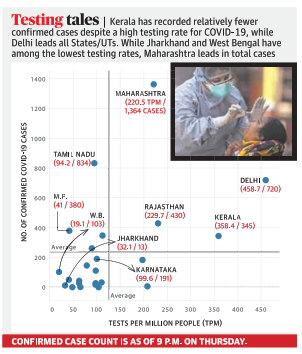
2.Odisha becomes first State to extend lockdown till April 30
Information in News:
Chief Minister Naveen Patnaik after State Cabinet through Video Conferencing decided that saving the lives of people was the topmost priority at this juncture
Odisha government on Thursday decided to extend lockdown until April 30 to contain the spread of COVID-19.
- Request the Union government not to start airline and railway services till April 30
- Educational institutions in the State would remain closed till June 17.
- It will take care of all the people who are stranded in Odisha.
- Activities related to agriculture, animal husbandry and MGNREGS would be facilitated during the lockdown period adhering to social distancing norms.
- Food security of the people was a major priority of his government.
- There will not be any problem in transport of goods.
- Propose to do one lakh rapid testing in the State at the earliest possible time
- Thanked doctors from all over the country who had volunteered to offer their services to the people showing symptoms of COVID-19 through the telemedicine helpline that was launched on Wednesday.
3.Kejriwal launches ‘Operation SHIELD’ gainst COVID19
Information in News
Sealing, quarantining, doorstep delivery in containment zones
The Delhi government will carry out ‘Operation SHIELD’ at 21 locations identified as containment zones in the Capital, Chief Minister Arvind Kejriwal announced here on Thursday.
‘Operation SHIELD’
‘Operation SHIELD’, which includes sealing, identifying and quarantining people in containment zones, doorstep delivery of essential items and door-to-door chec-king of people in those areas, will be undertaken by the Delhi government.
Operation SHIELD…
- S for sealing of the immediate area after geographical marking,
- H for home quarantine of all in the area,
I for isolation and tracing of people who have been first and second contacts,
- E for essential supplies, which involves doorstep delivery of essential items to the people,
- L for local sanitisation and disinfection of those areas, and
- D for door-to-door checking
So that people having symptoms of COVID-19 are isolated and testing can be done after taking samples.
- The need to wear masks before stepping out of homes.
- All government departments in Delhi have been instructed to stop all expenses other than salaries.
- Any expenditure other than coronavirus and lockdown expenses will be incurred only with the permission of the Finance Department.

4. Government app will track quarantined individuals
Information in News
The Delhi government has developed the ‘Home Quarantine App’ to monitor the real-time location of quarantined individuals.
Containment Survey App
- It is in the process of developing the ‘Containment Survey App’ to keep an eye on those residing in over two dozen COVID-19hostspots or containment zones across the Capital.
- It is to ensure that residents of such zones do not travel beyond their boundaries, risking the possible community spread of the virus.
- ‘Containment Survey App’, which will rely on neighbours to provide information on those residing in the vicinity of their homes in such zones and vice versa, are being finalised.
- The location tracking of a particular user will start the moment these apps are downloaded and, if a person quarantined travels 50-100 metres beyond a pre-set position, an alarm will be sent to the authorities on a dashboard which is divided into sub-divisions.
Home Quarantine App
- It is currently in operation at such locations which fall under the jurisdiction of the South revenue district and will be extended across the city in the days to come, is voluntary at the moment, using it may be made mandatory if and when the need to do so arises,”
- In cases of the home quarantined, the official stated if their phones aren’t with them for some reason, random phone calls to family members and neighbours in addition to selfies, if required, will be asked for by the government to ascertain their location within the designated zones.
5. Kerala gets nod for trial of plasma therapy
Information in News
ICMR approves clinical trial protocol to be administered for critically ill COVID-19 patients.
With Chief Minister Pinarayi Vijayan making it clear that the State would be exploring all currently available treatment options the world over, Kerala has once again gone a step ahead and won Indian Council of Medical Research’s (ICMR) approval for the clinical protocol exploring the feasibility of an experimental therapy, convalescent plasma transfusion, which may be administered to severe COVID-19 patients.
- Convalescent plasma therapy is not new and have been used by doctors to treat critically ill patients during earlier epidemics too, during H1N1, SARS and Ebola.
- HIV antivirals (lopinavir/ritonavir) might be potentially useful in treating COVID-19 patients.
- Getting the clinical protocol for administering plasma therapy cleared ahead by the ICMR is just part of our preparedness, that should we get severe COVID-19 patients during the second or third wave, we should be able to make use of this option.
- Drugs Controller General’s approval and institutional ethics committee approval would have to be there before the treatment can be administered.
- Report of a latest pilot study
- The report of a latest pilot study published on April 6, in Proceedings of National Academies of Sciences (U.S.), which explored the feasibility of convalescent plasma therapy in 10 critically ill COVID-19 patients concluded that “CP therapy shows a potential therapeutic effect and low risk in the treatment of severe COVID-19 patients.”
It said that one dose (200 ml) of convalescent plasma with a high concentration of neutralising antibodies was well-tolerated by patients and that it can rapidly reduce the viral load in patients and improve clinical symptoms significantly.
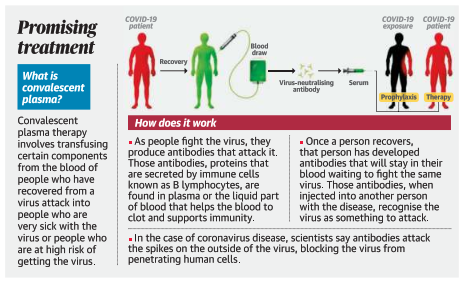
a. Drugs Controller General of India
- DCGI is responsible for approval of licences of specified categories of drugssuch as blood and blood products, IV fluids, vaccines and sera in India.
- It comes under the Ministry of Health & Family Welfare.
- DCGI under gamut of Central Drugs Standard Control Organization (CDSCO)
- DCGI lays down standards and quality of manufacturing, selling, import and distribution of drugs in India.
- It acts as appellate authority in case of any dispute regarding quality of drugs.
- It prepares and maintains national reference standard.
- It brings about uniformity in enforcement of Drugs and Cosmetics Act.
- It trains Drug Analysts deputed by State Drug Control Laboratories and other Institutions.
B.Central Drugs Standard Control Organisation (CDSCO)
- The Central Drugs Standard Control Organisation (CDSCO) under Directorate General of Health Services, Ministry of Health & Family Welfare, Government of India.
- It is the National Regulatory Authority (NRA) of India.
- Under the Drugs and Cosmetics Act, CDSCO is responsible for approval of New Drugs, Conduct of Clinical Trials, laying down the standards for Drugs, control over the quality of imported Drugs in the country and coordination of the activities of State Drug Control Organizations by providing expert advice with a view to bring about the uniformity in the enforcement of the Drugs and Cosmetics Act.
C.Institutional ethics committee ( IEC )
- Institutional Ethics Committee (IEC) is the committee formed of a group of people who go through the research protocol / proposal and state whether or not it is ethically acceptable.
- To safeguard the welfare and the rights of the participants it is mandatory that all proposals on biomedical research involving human participants should be cleared by an appropriately constituted Institutional Ethics Committee (IEC).
- This is also referred to as Institutional Review Board (IRB).
- The members work to safeguard the interests and welfare of all sections of the community.
- IEC has its own Standard Operating Procedures (SOPs) according to which it functions
- Responsibilities of IEC are to protect the dignity, rights and well-being of the potential research participants.
- The committee should meet at regular intervals and should not keep a decision pending for more than 3 – 6 months.
- IEC that is consistent with international and local guidelines and regulations. They must follow ICMR guidelines in India to protect safety and well-being of all participants and should prevent unethical research.
Composition of IEC
- Institutional Head constitutes an IEC and it is independent, competent and multidisciplinary unit. The number of persons are fairly small (8 – 12).
- The IEC appoints from among its members a chairperson who should be from outside the Institution and not head of the same Institution, and the Member Secretary from the same Institution who conducts the business of the committee.
Functions of IEC
The IEC’s member-secretary screens the research proposals for their completeness and depending on the risk involved categorize them into 3 types:
- Exemption from review for proposals that involve less than minimal risk.
- Expedited review for more than minimal risk proposals, minor protocol amendments, research on disaster management, and research on material collected during routine patient care like CT scans.
- Full review for more than minimal risk and that involve vulnerable subjects.
6.BEL, AIIMS develop remote monitor
Information in News
The system will also help to generate hot spots so that authorities can contain these zones.
The device has non-invasive sensors to measure the main parameters of a person who may be a COVID-19 patient: temperature, pulse rate, SPO2 or saturated oxygen level, and respiration rate.
BEL said it developed a proof of concept model of the system based on inputs given by AIIMS – Rishikesh. The public enterprise used its expertise in network centric and IoT (Internet of things) systems.
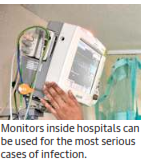
HOW IT WORKS?
A mobile app and Web browser have been developed. People who show symptoms of infection get enrolled with AIIMS – Rishikesh. The hospital will assess their complaints and if found necessary, will provide these individuals with a kit to help monitor their health parameters regularly.
“Patient health parameters, along with patient location, are uploaded on a regular basis on to a centralised command & control centre (CCC) on cloud using either the patient’s mobile phone or integral GSM SIM card,” BEL said. “The use of cloud will facilitate seamless scaling of the database of COVID-19 suspects/patients.”
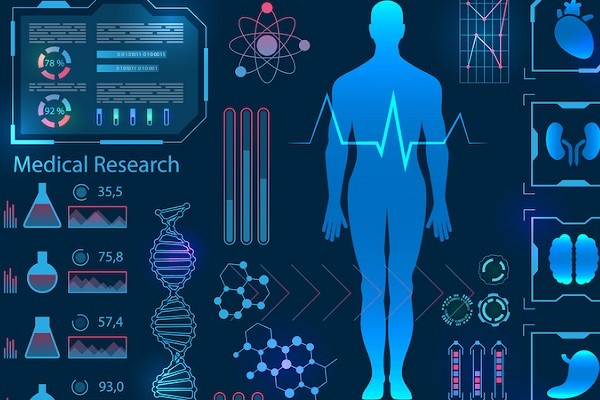
When the monitored parameters exceed preset thresholds, the software would send out alert messages to the medical officers and healthcare workers. It would also show the severity of the patient’s condition in different colour codes.
The geographical distribution of suspected or infected cases could also be obtained using the system’s data analytics software.
USES OF REMOTE MONITOR
- It is also expected to reduce the increasing demand of PPE [personal protective equipment] and logistics
- The system reduces the need for scarce personal protective gear.
- The solution aims to significantly reduce the risk of exposure to healthcare workers.
7.World faces new ‘Great Depression’
Information in News
- The global coronavirus pandemic is causing an economic crisis unlike any in the past century and will require a massive response to ensure recovery, IMF chief Kristalina Georgieva said on Thursday.
- She warned that “global growth will turn sharply negative in 2020,” with 170 of the International Monetary Fund’s 180 members experiencing a decline in per capita income.
- In fact, we anticipate the worst economic fallout since the Great Depression,” Ms. Georgieva said in a speech previewing next week’s spring meetings of the IMF and World Bank, which will be held virtually due to the restrictions imposed due to the COVID-19.
- Even in the best case the IMF expects only a “partial recovery” next year, assuming the virus fades later this year, allowing normal business to resume as the lockdowns imposed to contain its spread are lifted.
- But “it could get worse,” and “there is tremendous uncertainty around the outlook” and the duration of the pandemic.
- Countries already have taken steps worth a combined $8 trillion, but Ms. Georgieva urged governments to do more to provide “lifelines” for businesses and households to “avoid a scarring of the economy that would make the recovery so much more difficult.”
As per World Economic Outlook,
On Tuesday the IMF will release its World Economic Outlook with grim forecasts for its members for this year and next.
- In January, the IMF projected global growth of 3 percent this year and 3.4 percent in 2021. But that was a different world.
“The bleak outlook applies to advanced and developing economies alike. This crisis knows no boundaries. Everybody hurts,” Ms. Georgieva said.
She noted that about $100 billion in investments already had fled emerging markets more than three times the capital exodus seen in the 2008 global financial crisis.
- World Economic Outlook
- The World Economic Outlook (WEO) is a report by the International Monetary Fund.
- It analyzes key parts of the IMF’s surveillance of economic developments and policies in its member countries.
- It also projects developments in the global financial markets and economic systems.
- The WEO is usually prepared twice a year (April and October) and is used in meetings of the International Monetary and Financial Committee.
- The report encapsulates state of the global economy and highlights risks and uncertainty that threaten growth.
- The Great Recession of 2008
The Great Recession began well before 2008. The first signs came in 2006 when housing prices began falling. By August 2007, the Federal Reserve responded to the subprime mortgage crisis by adding $24 billion in liquidity to the banking system. By September 2008, Congress approved a $700 billion bank bailout, now known as the Troubled Asset Relief Program. By February 2009, Obama proposed the $787 billion economic stimulus package, which helped avert a global depression. Here is an overview of the significant moments of the Great Recession of 2008.
- The subprime mortgage crisis in 2006 signaled the beginning of the Great Recession.
- Because they were confident that home mortgages were sound collateral for MBS, banks and other financial corporations invested in these in the form of derivatives.
- To feed the rapid rise in demand for derivatives, many interest-only loans were cobbled and made available to even subprime borrowers or those who lacked creditworthiness.
- Subprime borrowers started defaulting when the housing bubble burst at the same time the Fed raised rates in 2006. Derivatives based on subprime mortgages lost value.
- “Too big to fail” banks, hedge funds, and insurance firms found themselves holding worthless investments. Lehman Brothers declared bankruptcy.
- The stock market crashed in 2008. The Dow registered one of the largest point drops in history.
- Congress passed TARP to allow the U.S. Treasury to enact a massive bailout program for troubled banks. The aim was to prevent both a national and global economic crisis.
- Unemployment reached 10% in 2009.
- ARRA and the Economic Stimulus Plan were passed in 2009 to end the recession.
- Had TARP, ARRA, and the Economic Stimulus Plan not been enacted, the 2008 Great Recession could have morphed into the second Great Depression.
The bankruptcy of Lehman Brothers
On 15 September 2008 when the US government allowed the investment bank Lehman Brothers to go bankrupt.
When Lehman Brothers went down, the notion that all banks were “too big to fail” no longer held true, with the result that every bank was deemed to be risky. Within a month, the threat of a domino effect through the global financial system forced western governments to inject vast sums of capital into their banks to prevent them collapsing.
Credit flows to the private sector were choked off at the same time as consumer and business confidence collapsed. All this came after a period when high oil prices had persuaded central banks that the priority was to keep interest rates high as a bulwark against inflation rather than to cut them in anticipation of the financial crisis spreading to the real economy.
India and the Crisis
India did not suffer much on account of the financial crisis. Absence of full capital account convertibility, a strict check on short-term foreign borrowings and its relative disconnect with the foreign banks insulated it from the devastation that was faced by the global financial system at that time.
Capital account convertibility:
Capital controls are used by the state to protect the economy from potential shocks caused by unpredictable capital flows. Capital account convertibility means the freedom to convert a currency for capital transactions and the rupee is not fully convertible on that front yet, though capital flows have been liberalised in recent years.
Capital Account Convertibility is not just the currency convertibility freedom, but more than that, it involves the freedom to invest in financial assets of other countries.
8.SC tells Centre to reply to plea for 4G in J&K
Information in News
The Supreme Court on Thursday sought a response from the government on a petition to restore mobile Internet data services in Jammu and Kashmir to 4G speed, as doctors, patients and the general public are unable to access the latest information, guidelines, advisories, daily updates and restrictions about COVID-19.
The right to Internet connectivity had repeatedly been recognised by the Centre as a “basic necessity or an essential service to ensure the right to health”.
Petition Says,
- The “citizens in Jammu & Kashmir should not be deprived of facilities that are already available to Indians across the country, i.e., effective and speedy internet, an indispensable tool in the struggle against COVID-19”.
- Internet in J&K had been restricted for over seven months following the abrogation of the special status of the Kashmiri people under Article 370 in August 2019. It specifically challenged an Internet restricting government order of March 26.
- There was need for real-time information, which the restricted Internet services running on the outdated 2G speed, largely used to receive and send text messages, and cannot provide.
- 4G was necessary in various critical fields, from telemedicine to supply of medical supplies to academics to online video consultations of professions and even commerce and trade in this time of complete lockdown.
- Not restoring 4G in J&K, in line with the rest of the country and in the light of the pandemic, on the “vague” ground of national security was a violation of the fundamental rights of life, dignity, free speech and shows non-application of mind.
9. Gamosa’ evolves from memento to mask in Assam
Information in News
- The ubiquitous decorative cotton towel “Gamosa” is being successfully turned into masks to fight COVID-19.
- Members of the non-profit Hargila Army in Pacharia, a village 25 km northwest of Guwahati, sewing the gamosa masks is more than just keeping themselves engaged to beat the lockdown inactivity.
- They have been designing the masks with motifs of the endangered hargila (greater adjutant stork), rhino and elephant to add a dash of wildlife conservation to the protection of human faces.
- We had ordered thousands of gamosas to be made and sold by the women during the Rongali Bihu festival. Since lockdown has put paid to the Bihu celebrations, the women turned the towels into masks for use during the COVID-19 crisis,
- The Hargila Army women, however, were not the first to improvise. A Fine Arts student named Phanindra Pradhan had transformed the gamosa after pharmacies in his town Gohpur ran out of masks. In Biswanath district, Gohpur is 290 km northeast of Guwahati.
- Wash the gamosas in disinfectant before ironing and stitching them into masks that are sold at ₹50 apiece.
Hargila (greater adjutant stork)

Gamosa
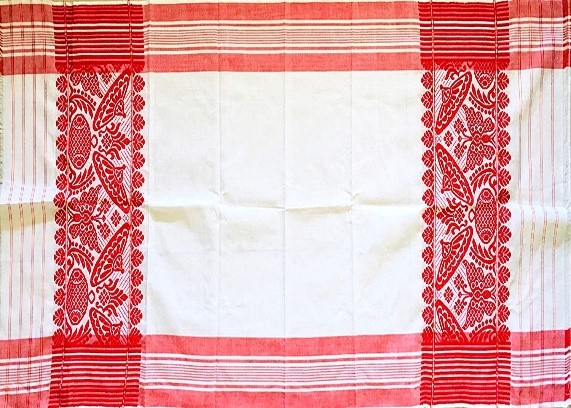
- Greater adjutant stork
- It is the world’s most endangered of the stork species.
- It is listed as “Endangered” in IUCN Red list of threatened species.
- Earlier it was distributed throughout northern and eastern India and many countries of south and south-east Asia, it is currently only in Assam and Bihar and a few other locations in Cambodia.
- The Endangered Greater Adjutant stork (Leptoptilosdubius) is one of the rarest species of Storks out of twenty species of Storks in the world.
- In India, eight species of residential storks are found, out of which Greater Adjutant is one of them.
- Once abundantly distributed in Southeast Asia, this stork is now restricted to a few isolated pockets in Assam and Bihar in India and PrekToal in Cambodia.
- It is locally called ‘Hargila’ in the Brahmaputra Valley in Assam, which harbours more than 80% of the global population of the species.
- This colonial birds breeds in traditional nesting colonies within thickly populated villages in Assam and breeds in tall trees species including Anthocephaluscadamba(Kadam), Artocarpusleukochuwa (Dewa), Pithecellobiummonadephum, BombaxCeiba (Simul), Tamarindusindica (Teteli), Trewianudifera (Bhelkol), Gmelinaarborea (Gomari).
- It is considered family by women of Dadara and Pacharia villages in Assam’s Kamrup district.
- Families observed a unique ceremony of baby shower for the greater adjutant nesting in their neighbourhood.
- They build colonies on tall trees during their breeding season in winter.
- A campaign was launched in Assamto save the birds by Aaranyak, a wildlife conservation organisation in 2009.
- Assam’s renowned environmentalist Purnima Devi Barman has won the prestigious Whitley Awards, also known as the Green Oscars, for her efforts in conserving greater adjutant storks in association with Aaranyak.
Loss of Habitat
- Assam state zoo first to breed endangered Hargila
- This rarest of storks, the Hargila is currently on the brink of extinction due to habitat loss stemming from indiscriminate felling of big trees and dwindling wetlands.
- Habitat loss, poaching and poisoning are the major threats to the species. Cutting down of nesting trees by the tree owners and infrastructural construction has resulted into a breeding failure of the species and many historical breeding colonies have gone missing in its historical distribution range.
- Bihu festival
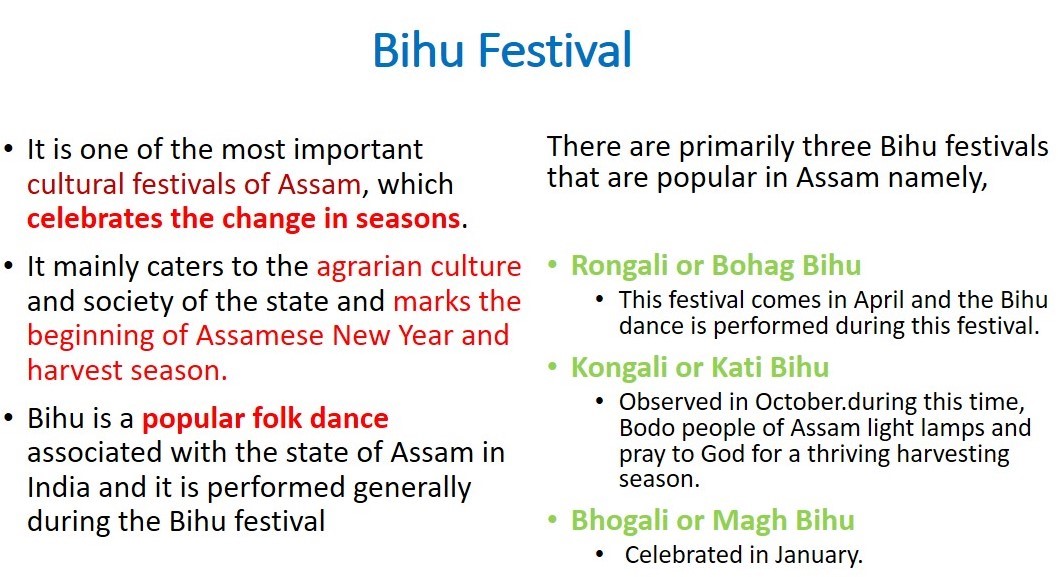
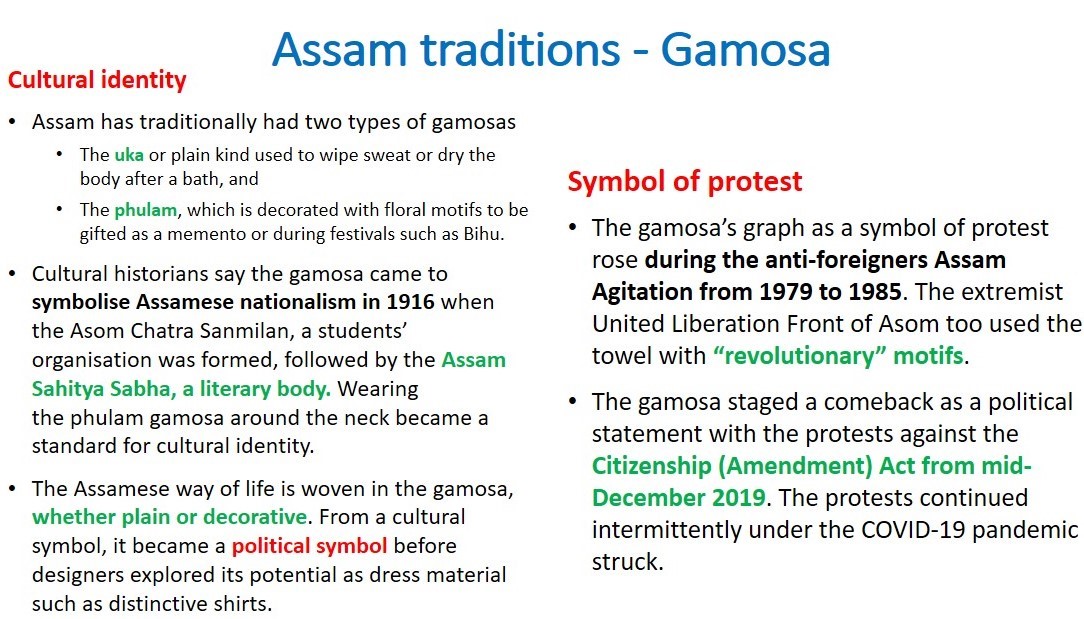
Tags : current affairs 2020 100, current affairs 2020 jan, current affairs 2020 pdf, current affairs 2020 quiz, current affairs 2020 hindi, current affairs 2020 india, current affairs 2020 today, current affairs 2020 nigeria, current affairs 2020 questions, current affairs 2020 in tamil, current affairs 2020 gk today, current affairs 2020 in english, current affairs 2020 gd topics, current affairs 2020 pdf download, current affairs 2020 in hindi pdf, current affairs 2020 questions and answers, current affairs 2020 january in affairs cloud,TNPSC Current Affairs 2020, current affairs in tamil, best current affairs for tnpsc exams, tnpsc group 4 current affair, tnpsc group 2 current affairs, tnpsc group 2a current affairs, tnpsc group 1 current affairs, tnpsc current affairs 2019

